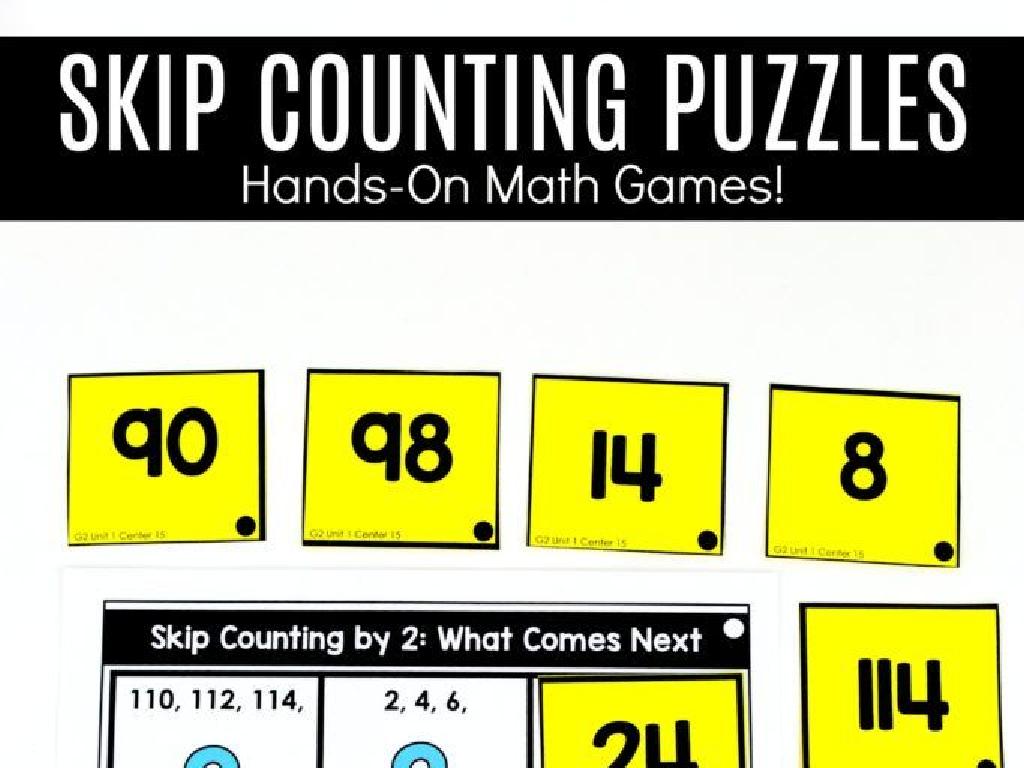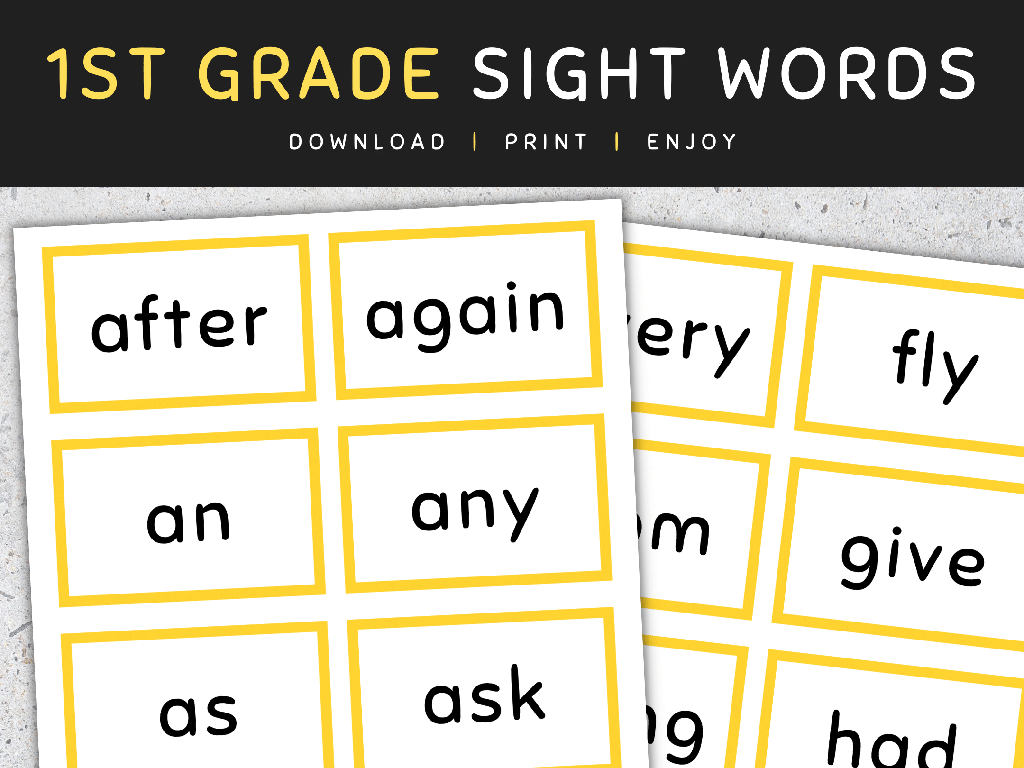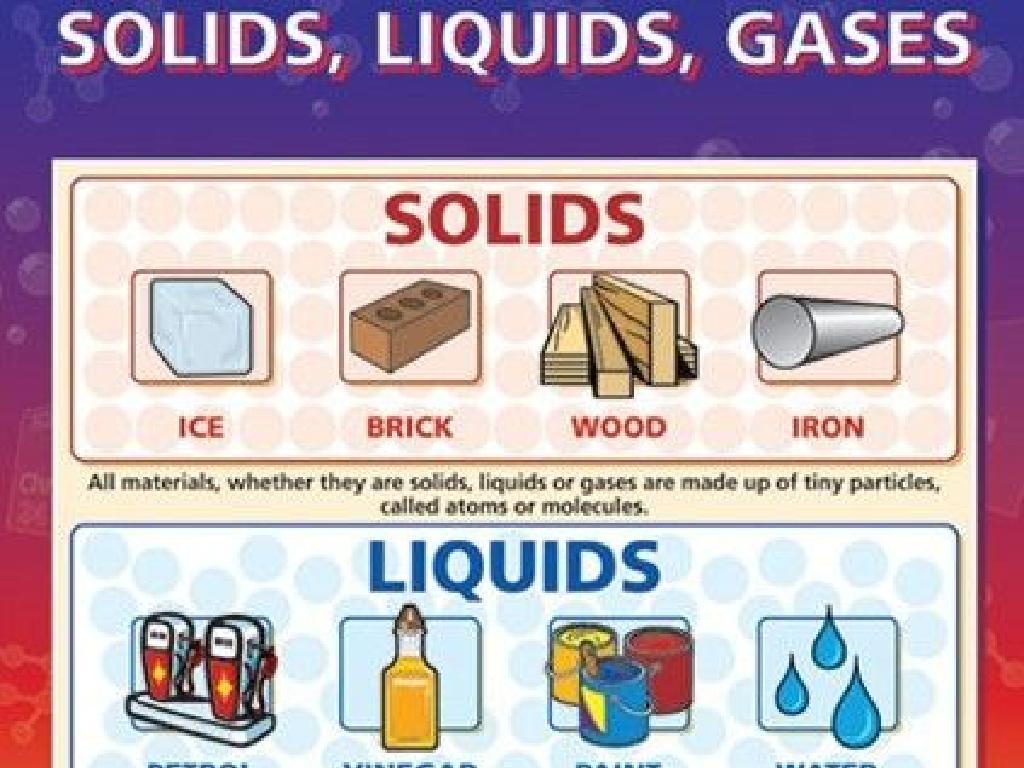Commas With Introductory Elements
Subject: Language arts
Grade: Fifth grade
Topic: Commas
Please LOG IN to download the presentation. Access is available to registered users only.
View More Content
Commas with Introductory Elements
– Understanding commas in sentences
– Commas help clarify meaning, e.g., ‘After lunch, I will walk.’
– Role of introductory elements
– Introductory words, phrases, or clauses set the stage for the main part of the sentence.
– Importance of punctuation
– Proper punctuation ensures clear communication and avoids confusion.
– Practice using commas
– We’ll do exercises to apply commas after introductory elements.
|
This slide introduces the concept of using commas after introductory elements in sentences, which is a key component of proper punctuation in writing. Emphasize to students that commas are like signals in writing that help readers understand the flow of a sentence. Discuss how introductory elements provide context or background and are often followed by a comma to separate them from the main clause. Highlight the importance of punctuation in making writing clear and easy to understand. In the next class, provide students with practice sentences where they can apply commas after introductory elements to reinforce the lesson.
Understanding Commas in Sentences
– What is a comma?
– A comma is a pause in a sentence, like taking a breath.
– Commas affect sentence meaning
– ‘Let’s eat, Grandma!’ vs ‘Let’s eat Grandma!’
– Simple comma usage examples
– For example, listing items: ‘I need pencils, erasers, and paper.’
|
This slide introduces the concept of commas to the students. Begin by explaining that a comma is like a signal for a short pause when reading a sentence. Emphasize how the placement of a comma can completely change the meaning of a sentence, using humorous examples to illustrate the point. Provide simple examples of comma usage, such as separating items in a list, which students can easily understand and relate to. Encourage students to think of commas as tools that help make their writing clearer and more understandable to the reader.
Commas with Introductory Elements
– Introductory elements begin sentences
– Like ‘Before the sunrise,’ or ‘Unfortunately,’
– They prepare us for the main sentence
– Examples: ‘Yes,’ ‘Well,’ ‘During the storm,’
– ‘Yes, I would love some more pie.’ ‘Well, it’s about time!’
– Practice using commas after introductions
– Let’s write sentences with different starters!
|
This slide introduces the concept of using commas after introductory elements in sentences. These elements set the stage for the main information and are followed by a comma to signal a pause. Provide students with examples of introductory words and phrases, and explain how they add context to the sentence. Encourage students to think of introductory elements as a way to ease the reader into the sentence. Practice with the class by writing sentences on the board and having students identify the introductory elements and where the comma should be placed. This will help them understand the structure and rhythm of sentences with introductory elements.
Why Use Commas After Introductory Elements?
– Commas clarify sentences
– For example, ‘Running quickly, he made it on time.’
– They prevent misreading
– Without a comma, sentences can be confusing.
– Indicate a pause in speech
– Reflects natural pauses when speaking.
– Enhance sentence flow
|
This slide explains the importance of using commas after introductory elements in sentences. Commas play a crucial role in ensuring that sentences are clear and easily understood. They help to signal a pause, much like when we speak, and they can prevent the reader from misinterpreting the meaning of a sentence. For instance, ‘While eating, the cat scratched me’ is clearer than ‘While eating the cat scratched me,’ which could imply you were eating the cat! Encourage students to think of commas as traffic signals in writing that guide the reader through the sentence smoothly.
Using Commas with Introductory Elements
– Commas after breakfast time
– ‘After breakfast, I went to school.’ – The comma comes after ‘breakfast’ which sets the time for the main action.
– Commas in morning descriptions
– ‘In the morning, birds chirp cheerfully.’ – Here, ‘In the morning’ introduces when birds chirp, so we use a comma.
– Commas for early arrivals
– ‘To get a good seat, arrive early.’ – This shows purpose for arriving early, and we separate it with a comma.
– Practice punctuating correctly
|
This slide introduces students to the concept of using commas to separate introductory elements from the main part of the sentence. Introductory elements can set the scene for the main action, indicate time, or provide a reason. It’s important to show students how commas help in clarifying the meaning of sentences and in indicating a pause. Encourage students to identify the introductory phrase and explain why a comma is used. Practice with additional examples and have students create sentences with introductory elements and commas.
Your Turn: Identify the Introductory Elements
– Observe sentences on the board
– Spot the introductory elements
– Introductory elements set the stage for the main part of the sentence.
– Place commas correctly
– After the introductory element, add a comma before the main clause.
– Practice makes perfect!
|
This slide is an interactive class activity designed to help students identify and correctly place commas after introductory elements in sentences. Start by writing sentences on the board that include introductory words, phrases, or clauses. Ask students to identify these elements. Then, guide them to place commas where they belong, right after these introductory elements. Emphasize that introductory elements can include words like ‘however’ or ‘yes,’ phrases like ‘in the morning,’ or clauses like ‘after I finished dinner.’ Encourage students to explain why they placed the comma where they did to reinforce the concept. Provide immediate feedback and additional practice sentences if needed.
Class Activity: Crafting Sentences with Introductory Elements
– Write sentences with introductory elements
– Place a comma after the introductory element
For example, ‘After the rain stopped, the sun appeared.’
– Share your sentences with the class
– Understand the importance of commas
|
This activity is designed to help students practice using commas after introductory elements in sentences. Start by explaining what an introductory element is, such as a word, phrase, or clause that comes before the main part of the sentence. Emphasize the importance of using a comma to separate this element from the rest of the sentence for clarity. Students should write their own sentences on a piece of paper, using various introductory elements. Encourage creativity and sharing among students to foster a collaborative learning environment. After writing, students will take turns reading their sentences aloud, which will help reinforce the concept and allow for immediate feedback. Possible activities include writing sentences based on personal experiences, creating fictional scenarios, or describing actions happening in the classroom.
Wrapping Up: Commas with Introductory Elements
– Recap: Why commas matter
– Homework: Craft 5 sentences
– Include introductory elements like ‘After the rain,’ or ‘Having finished the meal,’
– Use various introductory elements
– Remember to place a comma after each introductory element
– Get ready for a commas quiz!
|
As we conclude today’s lesson, remind students of the key role commas play in clarifying the meaning of sentences, especially when using introductory elements. For homework, they should write five original sentences, each with a different introductory element followed by a comma. This will help reinforce their understanding and prepare them for the upcoming quiz. Encourage creativity and the use of their new skills to enhance their writing. In the next class, we’ll have a quiz to assess their grasp of using commas with introductory elements, so they should review their notes and homework to prepare.






